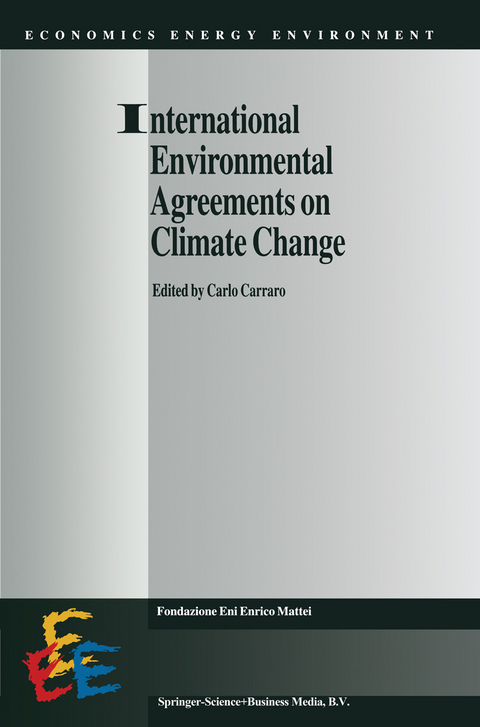
International Environmental Agreements on Climate Change
Springer (Verlag)
978-0-7923-5515-1 (ISBN)
Climate change is one of the major environmental concern of many countries in the world. Negotiations to control potential climate changes have been taking place, from Rio to Kyoto, for the last five years. There is a widespread consciousness that the risk of incurring in relevant economic and environmental losses due to climate change is high. Scientific analyses have become more and more precise on the likely impacts of climate change. According to the Second Assessment Report of the Intergovernmental Panel on Climate Change, current trends in greenhouse gases (GHGs) emissions may indeed cause the average global temperature to increase by 1-3. 5 °C over the next 100 years. As a result, sea levels are expected to rise by 15 to 95 em and climate zones to shift towards the poles by 150 to 550 km in mid latitudes. In order to mitigate the adverse effects of climate change, the IPCC report concludes that a stabilization of atmospheric concentration of carbon dioxide - one of the major GHGs - at 550 parts per million by volume (ppmv) is recommended. This would imply a reduction of global emissions of about 50 per cent with respect to current levels. In this context, countries are negotiating to achieve a world-wide agreement on GHGs emissions control in order to stabilize climate changes. Despite the agreement on targets achieved in Kyoto, many issues still remain unresolved.
1. Introduction.- 2. The Structure of International Environmental Agreements.- 3. Negotiating Greenhouse Abatement and the Theory of Public Goods.- 4. CO2 Concentration Limits, the Costs and Benefits of Control, and the Potential for International Agreement.- 5. Necessary Conditions for Stabilization Agreements.- 6. Burden Sharing, Joint Implementation, and Carbon Coalitions.- 7. On Stabilizing CO2 Concentrations — Cost-Effective Emission Reduction Strategies.- 8. Exploring a Technology Strategy for Stabilizing Atmospheric CO2.- 9. Economic Impacts of Multilateral Emission Reduction Policies: Simulations with WorldScan.- 10. The Optimal Timing of Greenhouse Gas Emission Abatement, Individual Rationality and Intergenerational Equity.- 11. Implications of Emissions Limitations Protocols and Concentration Stabilization Trajectories for Developing (Non-Annex I) Countries.- 12. Additionality, Transactional Barriers and the Political Economy of Climate Change.
| Erscheint lt. Verlag | 30.4.1999 |
|---|---|
| Reihe/Serie | Economics, Energy and Environment ; 13 |
| Zusatzinfo | VI, 234 p. |
| Verlagsort | Dordrecht |
| Sprache | englisch |
| Maße | 210 x 297 mm |
| Themenwelt | Naturwissenschaften ► Geowissenschaften ► Meteorologie / Klimatologie |
| Wirtschaft ► Volkswirtschaftslehre | |
| ISBN-10 | 0-7923-5515-6 / 0792355156 |
| ISBN-13 | 978-0-7923-5515-1 / 9780792355151 |
| Zustand | Neuware |
| Haben Sie eine Frage zum Produkt? |
aus dem Bereich


